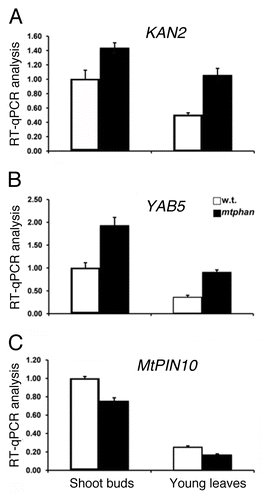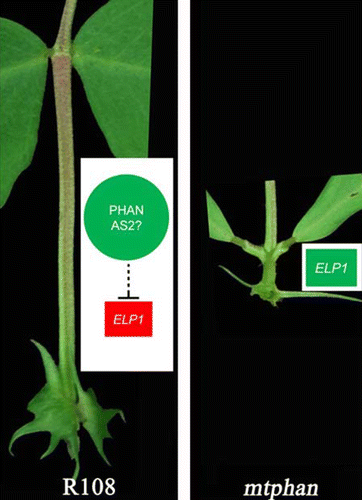Figures & data
Table 1. Primer sequences
Figure 1. Quantitative RT-PCR analysis of leaf polarity and patterning gene expression in Medicago truncatula. (A) KAN2, (B) YAB5, and (C) MtPIN10 gene expression was analyzed in shoot buds and young leaves of one-month-old wild-type (R108) and mtphan mutant. The expression level was normalized using a Medicago ACTIN gene. Shown are means ± s.d. (n = 3).

Figure 2. Models of petiole identity regulation in Medicago truncatula. MtPHAN, likely with the AS2 ortholog, represses expression of ELP1, preventing ectopic acquisition of motor organ identity in petioles of wild-type plants. In the absence of MtPHAN, ELP1 is ectopically expressed to promote motor organ identity in petioles of mature mtphan mutant. Red and green colors indicate active and inactive gene expression, respectively.

